
Maintaining Confidentiality: Tips for Securely Incorporating ChatGPT Into Your Job Tasks

The Hidden Drawbacks of Relying on AI Chatbots for Content Creation - Discover the Top 8 Reasons to Be Cautious
Recent developments in AI-powered chatbots and writing tools have made waves in the creative industry. They’ve come a long way from producing incoherent texts. Nowadays, even free platforms can generate a logical, grammatically correct 1,000-word article on any given topic within seconds.
Although convenient, chatbots and writing tools aren’t perfect. We’ve listed the top reasons why blindly relying on them compromises the quality of your articles and diminishes your credibility.
1. AI Doesn’t Fact-Check Information
AI systems cover a broad range of general questions. They’ll scour billions of online resources to provide a condensed answer comprising the most widely accepted facts. Users often get reliable responses in science, math, and history.
Although chatbots andwriting tools consistently strive for accuracy, they don’t double-check the facts. AI only relays what it finds. Even sophisticated systems inaccurately respond to questions about recent research ideas, advanced mathematical equations, medicine, controversial topics, and current events.
You can stilluse ChatGPT like a search engine . Just make sure you don’t take its answers at face value; otherwise, you might publish misleading information. As a general rule, always compare AI responses with official resources.
2. Language Models Like GPT-3 Follow Templates
Modern AI platforms usesophisticated language models like GPT-3 . They execute aggressive machine and deep learning methods to produce human-like text.
Admittedly, distinguishing between GPT-3 and man-made content is challenging. Depending on your prompts, you can generate a grammatically correct, natural-sounding 1,000-word article within seconds. Most readers won’t notice anything unusual at a glance.
Despite their advancements, AI language models still follow templates. AI answers in a formulaic, repetitive manner—which might sound unnatural to trained writers. The text becomes predictable.
Take the below text about cats as an example. You won’t spot any basic errors like typos, missing punctuation marks, or misspelled words. It’s a relatively decent piece.
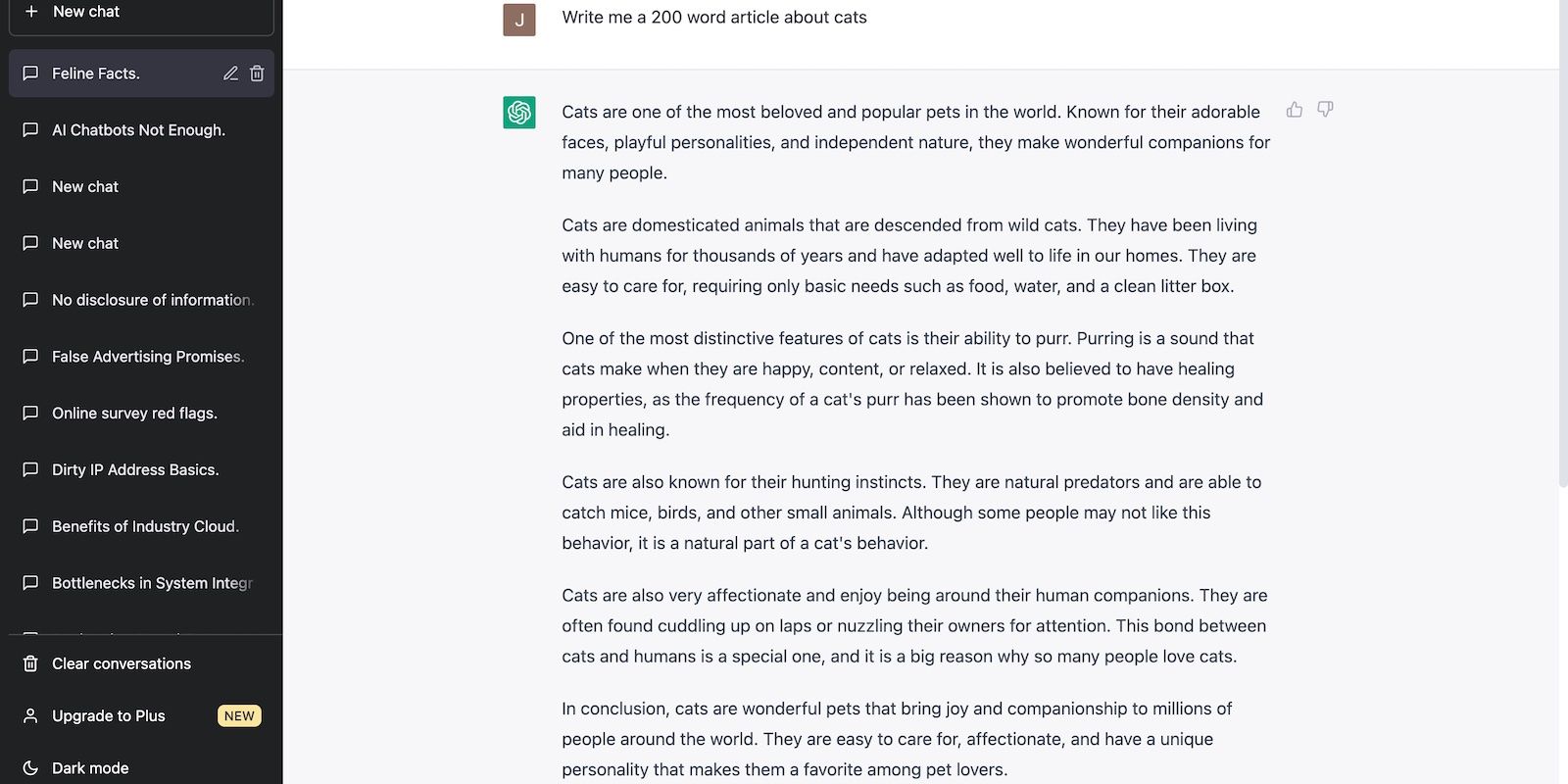
Now, compare it with the below photo. You’ll notice that the response follows the exact template, although this one talks about dogs.
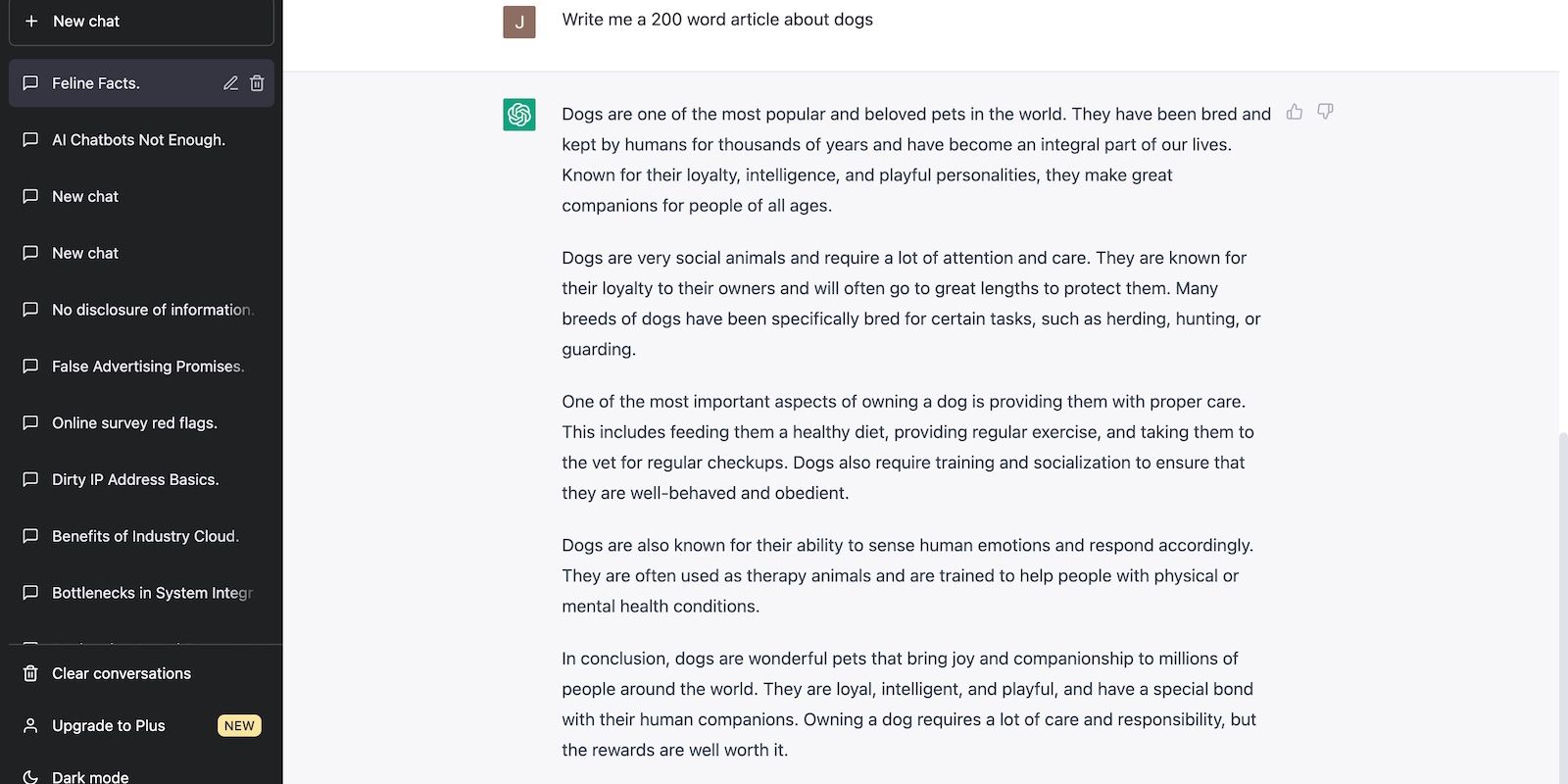
3. Overdependence on AI Makes You a Lazy Researcher
AI has further simplified “research.” Instead of combing through Google search results, you can just ask chatbots and writing tools. They’ll provide brief, concise answers.
While innovative and convenient, this technology makes people lazy. If you constantly yearn for instant gratification, you’ll eventually neglect challenging yet critical tasks, e.g., fact-checking, data analysis, and topic research.
Before writing, make sure you study your subject. Extensive research is the core of every well-written piece—spend at least 30 to 60 minutes reading online sources. You can provide value by comparing resources, laying down verified facts, and asserting well-founded conclusions. Simply paraphrasing what chatbots say is senseless.
4. AI Scrapes Commonly Published Information
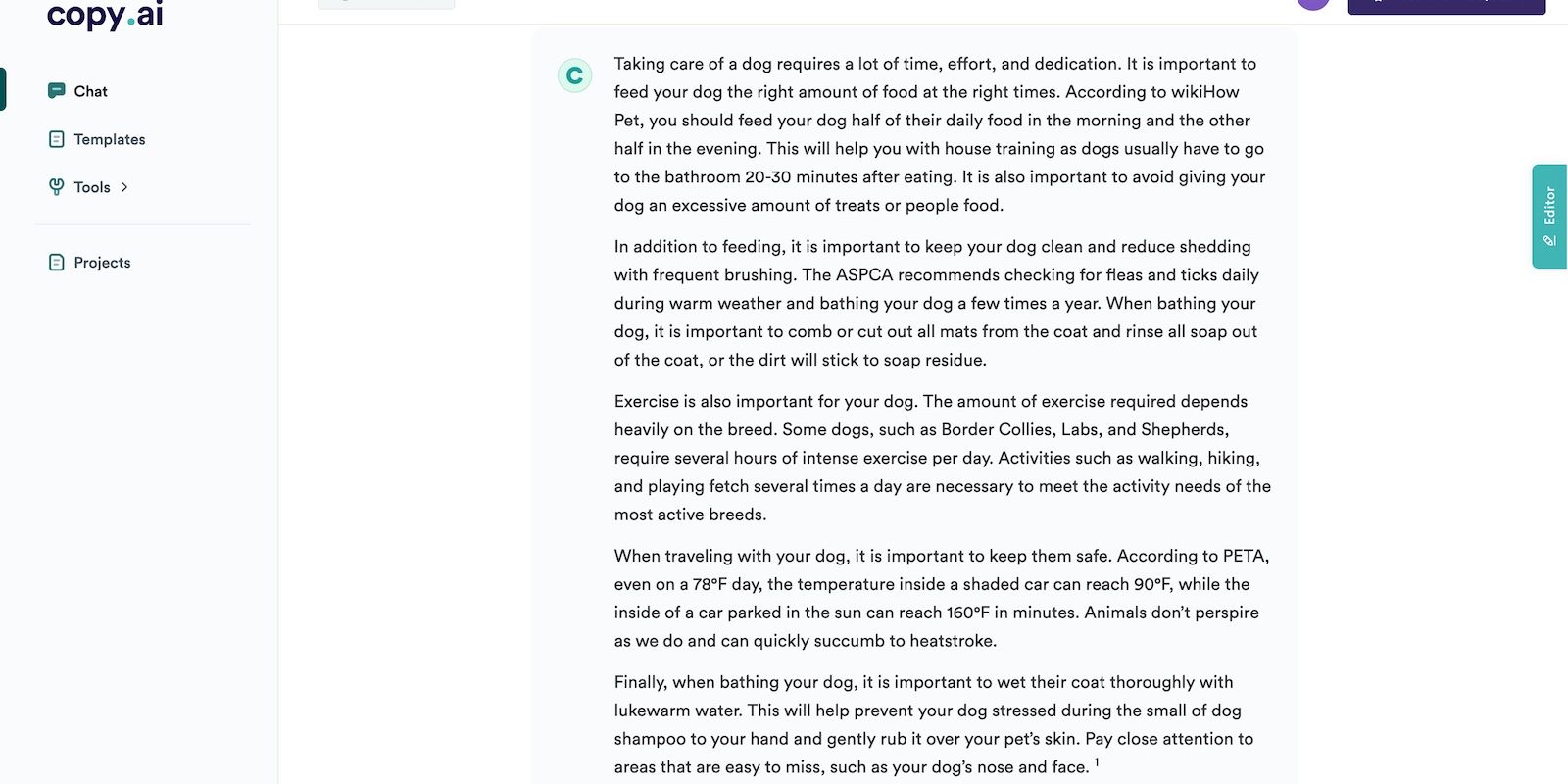
AI avoids inaccuracies by generating generic responses. Take the above piece as an example. When we asked an AI writing tool to talk about dog care, it focused on super-common tips, which readers have likely seen multiple times. The below photo also shows that its insights came from an unreliable source.
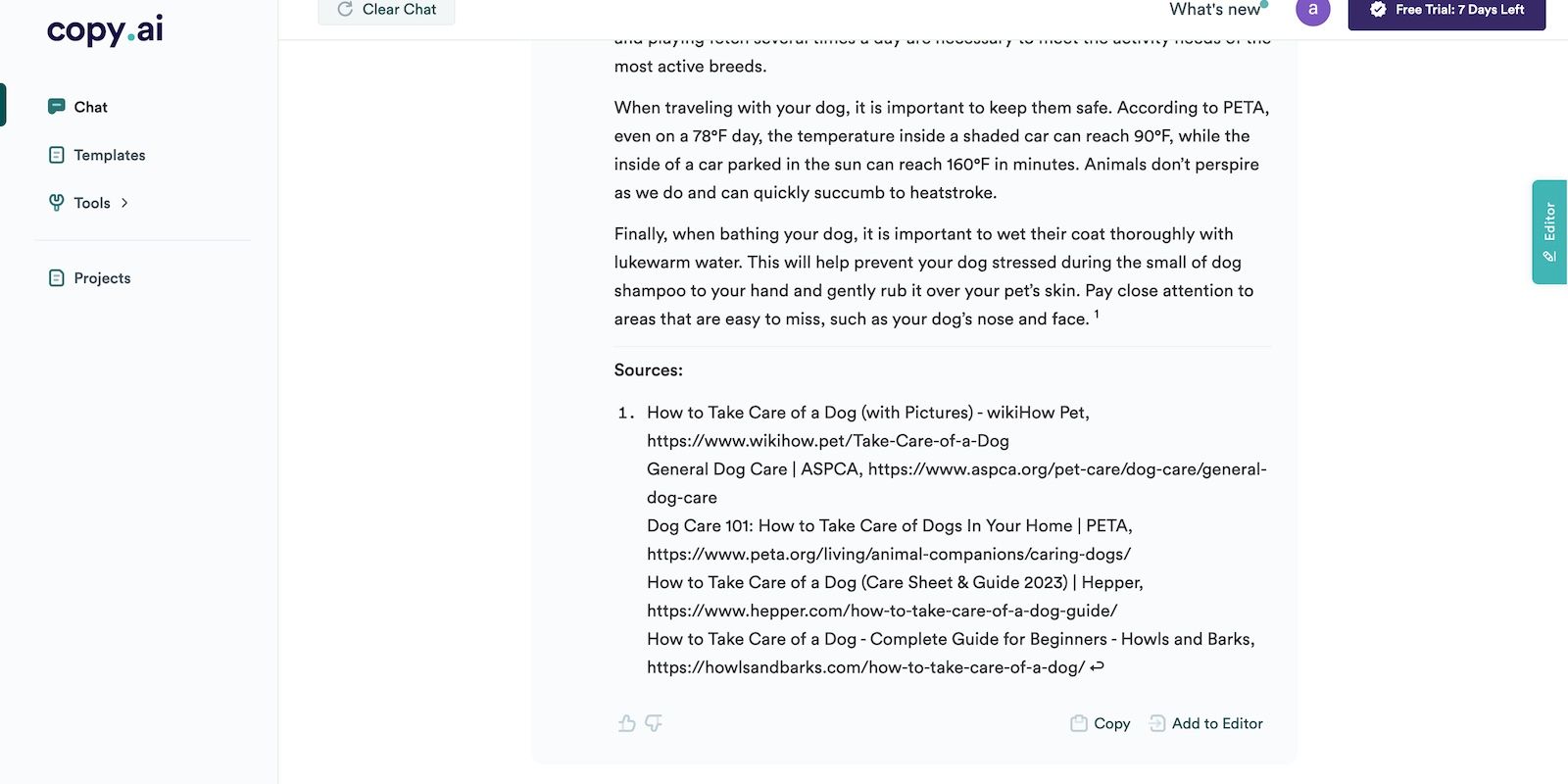
Generic pieces rarely gain traffic. To attract readers and score higher SERP rankings, write original articles that are exclusive to your site. Stop rewriting stuff that everyone already knows.
Of course, you can still discuss general subjects. Just make sure you cover a unique angle or stand that aligns with your branding and image.
5. AI Generates the Same Results for Similar Questions
While AI scans billions of resources, its answers contain the same information. Chatbots and writing tools generate formulaic text comprising repeated data, regardless of how you state questions. Restructuring prompts will only trigger sentence variations.
For more accurate insights, double-check facts by visiting reputable, credible resources. Also, compare differing opinions. There are several ways to approach topics—you don’t have to copy the story angles of your AI tools.
6. AI Can’t Adopt Your Tone
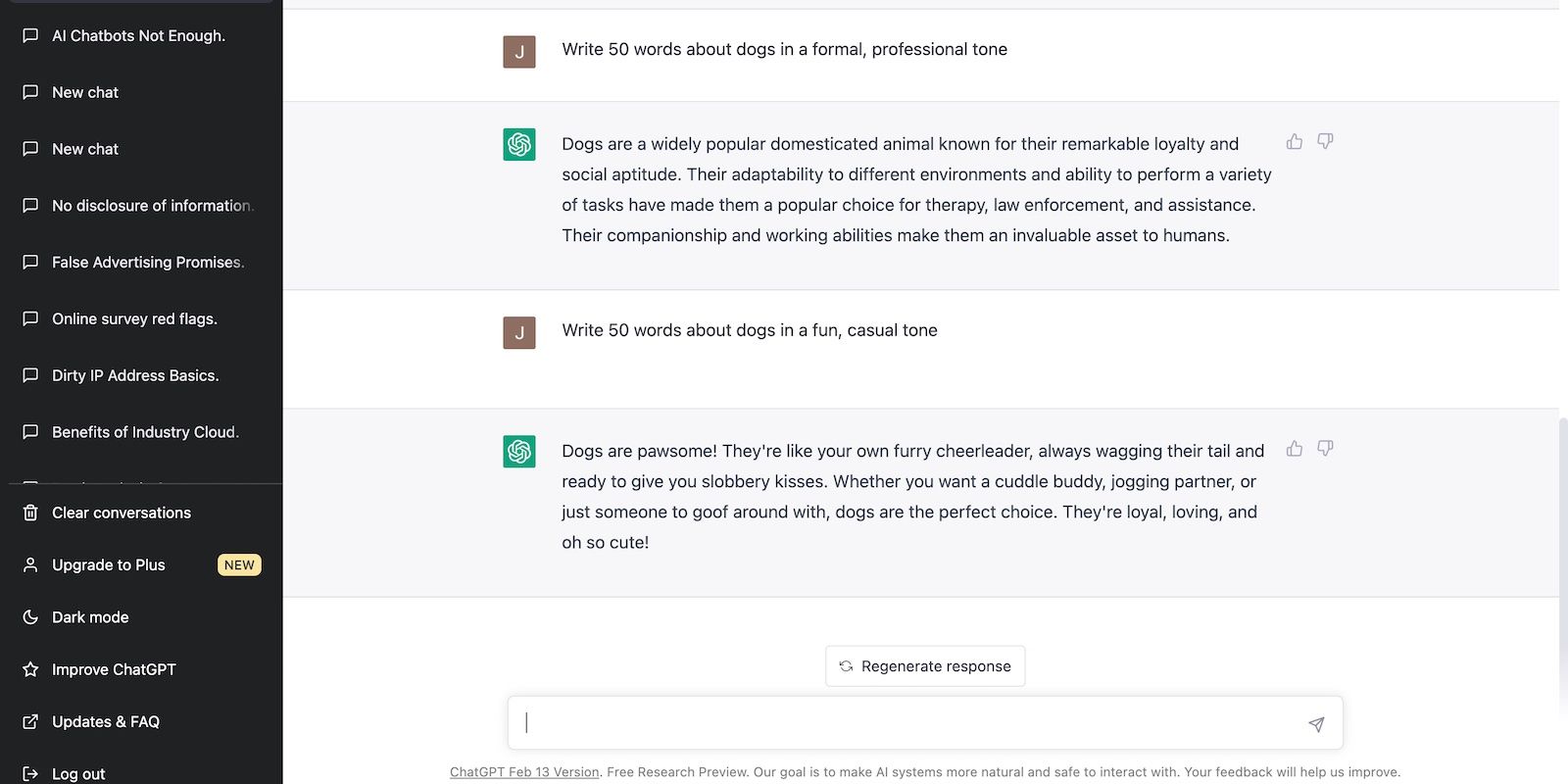
AI writing tools and chatbots can structure responses in certain ways. For instance, the above photo shows that ChatGPT could form professional and casual variations of the same topic. Generally, if you insert specific keywords into your prompts, you’ll trigger detailed changes.
Despite their advancements in mimicking human-like text, chatbots and writing tools still have limitations. They can’t wholly replicate tone. AI follows predetermined, formulaic templates, even when instructed to adopt a specific tone.
It’s best to curate articles yourself. Remember that consistent branding plays a crucial role in retaining site visitors. The content you publish, your layout, and the conclusions you assert should resonate with your target audience. Give them reasons to come back to your site.
7. Writing Tools Don’t Incorporate SEO Tactics Into Its Pieces
Writers typically use AI platforms to hasten the writing process. Most tools produce thousands of words within seconds, so theoretically, you could edit and publish a new blog in under 10 minutes.
Although fast, AI sacrifices quality. AI-generated pieces rarely meet the criteria to rank on SERPs—onlyhigh-quality content improves site visibility . Publishing hundreds of articles won’t matter if no one reads them.
If you want top-ranking pages, focus on providing value. Haphazardly instructing writing tools and chatbots to stuff keywords into lengthy, generic blogs yields negligible results. Search engines might even qualify your site as spam.
8. Many Premium Plagiarism Checkers Flag AI-Generated Pieces
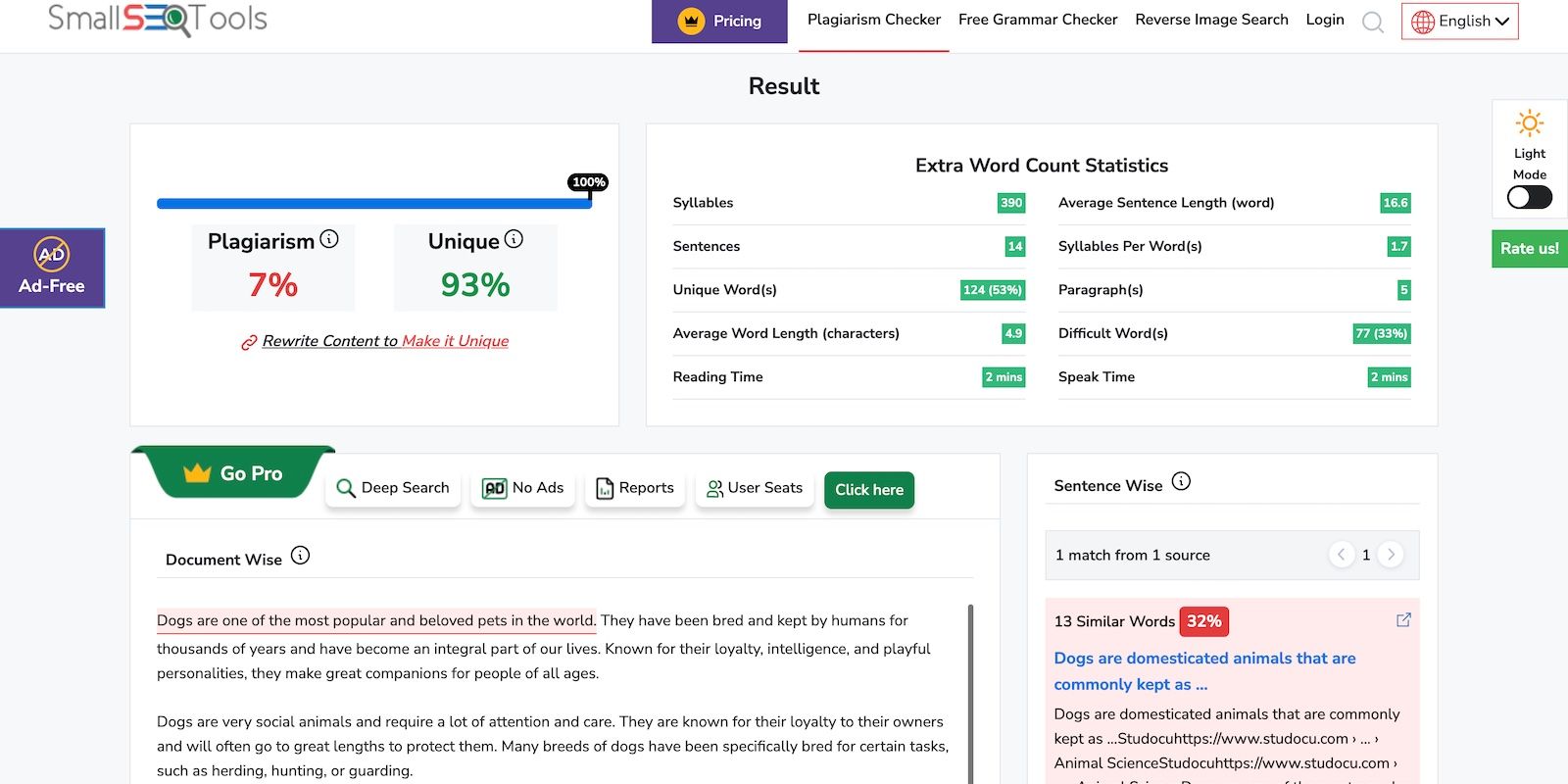
AI doesn’t gather information from just one site. Before producing an appropriate response, it runs relevant data from billions of resources through its language model. You can’t trace AI pieces back to a single source.
With that said, they’re still unoriginal. Chatbots and writing tools only escape plagiarism technicalities through formulaic paraphrasing. Spinning bypasses many plagiarism detectors, after all.
Writers have differing opinions about the morality of publishing AI content and plagiarism, but as a respectable professional, you should do your own research. Never risk plagiarizing content. Study the topics for yourself, draw logical conclusions, then convey them in your own words.
Use AI Chatbots Responsibly
Treat AI like a tool, not a content production department. Always remember that writing tools check for neither plagiarism nor factual accuracy. Publishing AI-generated pieces as is will plummet your site’s SERP ranking, hurt your credibility, and diminish your writing quality. It’s also hard to shake off the reputation of being a lazy, AI-dependent writer.
With that said, writers don’t have to avoid AI altogether. Despite its shortcomings, it presents innovative features that will streamline your workflow and automate tedious tasks. Explore ways of responsibly utilizing it. For instance, AI could assist with non-writing activities like plagiarism detection, basic editing, keyword research, and site-building.
Also read:
- [New] 'Jestful Journeys' An In-Depth Goofy Movie Review
- [New] 2024 Approved How To Take Your Tweets Visual Aesthetics From Vids to Dynamic GIFs
- [New] In 2024, Top Tips to Stream Rust Like a Pro
- [Updated] Efficient iPhone/Android Guide for Tweets as Visuals
- [Updated] In 2024, Step-by-Step Screen Recording Snapshots on Mobile
- 2024 Approved PC Strategies for Acquiring Twitter Jokes (GIFs)
- Effortless Media Transfer Twitter Videos on WhatsApp
- Giggle Galaxy Most Shared Content on Both Platforms for 2024
- How to Get Into and Out of iPhone Recovery Mode
- In 2024, Tutorial to Change Xiaomi Redmi K70E IMEI without Root A Comprehensive Guide
- Innovating Industries with Immersive Virtual Reality
- Leveraging WhatsApp's Features for Twitter Video Distribution
- Overcoming Error 0XC10100be in Vids
- Step-by-Step Tutorial on Repairing a Website's 50^ Error Code Problem
- Title: Maintaining Confidentiality: Tips for Securely Incorporating ChatGPT Into Your Job Tasks
- Author: Robert
- Created at : 2025-02-28 04:41:35
- Updated at : 2025-03-02 19:03:33
- Link: https://twitter-videos.techidaily.com/maintaining-confidentiality-tips-for-securely-incorporating-chatgpt-into-your-job-tasks/
- License: This work is licensed under CC BY-NC-SA 4.0.